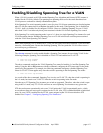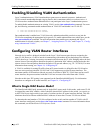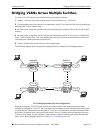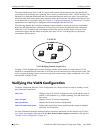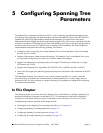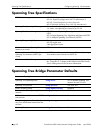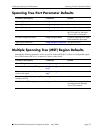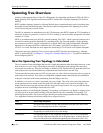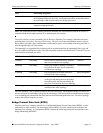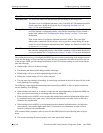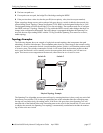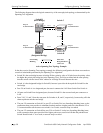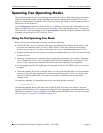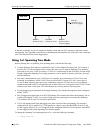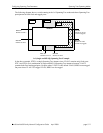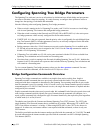
Configuring Spanning Tree Parameters Spanning Tree Overview
OmniSwitch 6600 Family Network Configuration Guide April 2006 page 5-5
Note. The distinction between a backup port and an alternate port was introduced with the IEEE 802.1w
standard to help define rapid transition of an alternate port to a root port.
The role a port plays or may potentially play in the active Spanning Tree topology determines the port’s
operating state; discarding, learning or forwarding. The port state is also configurable in that it is possi-
ble to enable or disable a port’s administrative status and/or specify a forwarding or blocking state that is
only changed through user intervention.
The Spanning Tree Algorithm only includes ports in its calculations that are operational (link is up) and
have an enabled administrative status. The following table compares and defines 802.1D and 802.1w port
states and their associated port roles:
Once the Spanning Tree is calculated, there is only one root bridge, one designated bridge for each LAN,
and one root port on each bridge (except for the root bridge). Data travels back and forth between bridges
over forwarding port connections that form the best, non-redundant path to the root. The active topology
ensures that network loops do not exist.
Bridge Protocol Data Units (BPDU)
Switches send layer 2 frames, referred to as Configuration Bridge Protocol Data Units (BPDU), to relay
information to other switches. The information in these BPDU is used to calculate and reconfigure the
Spanning Tree topology. A Configuration BPDU contains the following information that pertains to the
bridge transmitting the BPDU:
Alternate Port Any operational port that is not the root port for its bridge and its bridge is not
the designated bridge for the LAN. An alternate port offers an alternate path to
the root bridge if the root port on its own bridge goes down.
Disabled Port Port is not operational. If an active connection does come up on the port, it is
assigned an appropriate role.
STP Port State RSTP Port State Port State Definition Port Role
Disabled Discarding Port is down or administratively disabled
and is not included in the topology.
Disabled
Blocking Discarding Frames are dropped, nothing is learned or
forwarded on the port. Port is temporarily
excluded from topology.
Alternate, Backup
Listening Discarding Port is preparing to transmit data and is
included in the active topology.
Root, Designated
Learning Learning Port is learning MAC addresses that are seen
on the port and adding them to the bridge
forwarding table, but not transmitting any
data. Port is included in the active topology.
Root, Designated
Forwarding Forwarding Port is transmitting and receiving data and is
included in the active topology.
Root, Designated
Role Port/Bridge Properties



